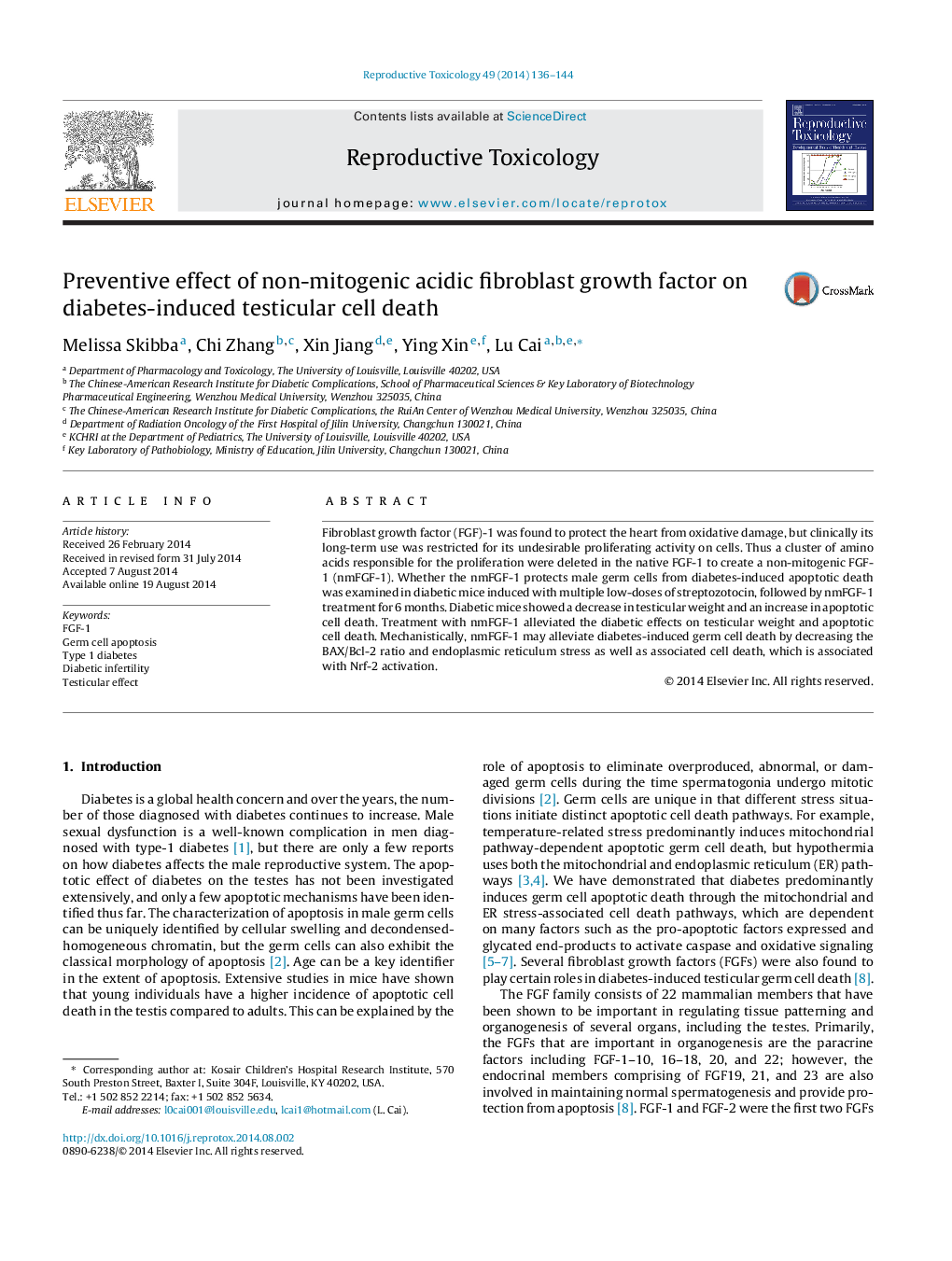| Article ID | Journal | Published Year | Pages | File Type |
|---|---|---|---|---|
| 5858840 | Reproductive Toxicology | 2014 | 9 Pages |
â¢Effect of non-mitogenic FGF-1 on germ cell death under diabetic condition was evaluated.â¢nmFGF-1 protects male germ cells from diabetes-induced apoptotic death.â¢nmFGF-1 may act on the mitochondrial pathway to suppress apoptosis by cross-talk with the cell death receptor pathway and independent suppression of ER stress.â¢nmFGF-1 may protect from diabetes-mediated oxidative damage through activation Nrf2.
Fibroblast growth factor (FGF)-1 was found to protect the heart from oxidative damage, but clinically its long-term use was restricted for its undesirable proliferating activity on cells. Thus a cluster of amino acids responsible for the proliferation were deleted in the native FGF-1 to create a non-mitogenic FGF-1 (nmFGF-1). Whether the nmFGF-1 protects male germ cells from diabetes-induced apoptotic death was examined in diabetic mice induced with multiple low-doses of streptozotocin, followed by nmFGF-1 treatment for 6 months. Diabetic mice showed a decrease in testicular weight and an increase in apoptotic cell death. Treatment with nmFGF-1 alleviated the diabetic effects on testicular weight and apoptotic cell death. Mechanistically, nmFGF-1 may alleviate diabetes-induced germ cell death by decreasing the BAX/Bcl-2 ratio and endoplasmic reticulum stress as well as associated cell death, which is associated with Nrf-2 activation.
